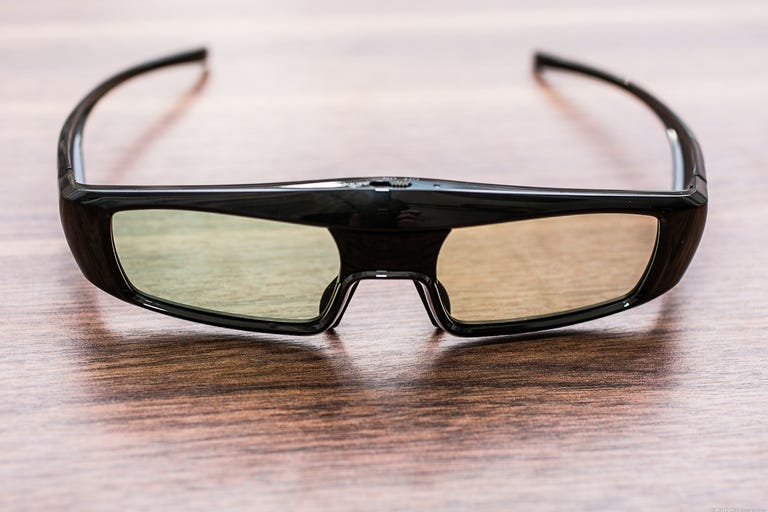 Why You Can Trust CNET
Why You Can Trust CNET Panasonic TY-ER3D4MU review: Panasonic TY-ER3D4MU
Panasonic TY-ER3D4MU
Last year, three of the 'big four' television manufacturers announced along with 3D glasses maker XpanD they were pooling their resources to create a single standard for active 3D glasses, called the Full HD 3D Glasses Initiative.
The Good
The Bad
The Bottom Line
While Sony's 2012 3D TVs like the HX750 are still proprietary, Samsung and Panasonic are now selling 2012 glasses and TVs that comply with the standard and earn the special logo. Of most interest will be the cheaper glasses, the Samsung SSG-4100GB, which sell for $20 online. The Panasonic TY-ER3D4MU go for around $60. Both will work with any 2012 Samsung or Panasonic active 3D TV and any future TV that complies with the Full HD 3D standard.
Design and Fit
Unlike the lightweight Samsung SSG-4100GB, the Panasonic TY-ER3D4MU glasses feel harder wearing and don't require assembly. The Panasonics have longer arms that the Samsungs and are hinged for better rigidity. The fit is very good whether you wear prescription glasses or not and the glasses block out quite a bit of light while still remaining lightweight.
Like the Samsung's the on-off control is situated just above the nose and holding the control to the right pairs them to the TV. We had no trouble pairing them to either TV as long as we held them close to the screen. The glasses use Bluetooth instead of infrared so they don't need a physical view of the TV, which means you don't have to resync them if you lose line of sight for some reason. The Panasonic's TY-ER3D4MUs are rechargeable and charge via a small USB port.
Performance
The Samsung and Panasonic glasses performed about the same, although if we had to pick one based on picture quality alone it would be these Panasonics.
To compare the two glasses we used the movie "Hugo" as the opening five minutes make an excellent 3D test. We compared both manufacturers glasses on both a Panasonic TC-P55ST50 and a Samsung PN50E8000, both set to the default Cinema modes for 3D.
Switching quickly between the two glasses there is a slight but noticeable difference in black levels. The image viewed through the Panasonic glasses seemed just a bit darker on the screens of both TVs. We're not sure if this difference is caused by the lenses themselves or simply by the Panasonic's fit--the more closed design blocks out more ambient light even in our completely dark room.
There was almost no difference in color between the two sets of glasses, and the ghostly outlines of crosstalk appeared identical as well. Both varied depending on which TV we watched--for the record the Samsung was superior in both areas--but the glasses had a negligible impact.
As far as longevity, neither pair are particularly immune to breakage--we actually have a pair of each with cracks in the lenses that broke during shipping (better packaging next time, guys). The cracks expose the liquid crystal layer, which makes them useless. Moral of the story is: don't leave these out for people to stand or sit on. And if this is a problem get a passive LG TV where the glasses are much cheaper and don't have the gooey LCD center.
Opinons are split on whether passive or active is the best 3D technology. Ty prefers passive as the interlacing artefacts aren't as annoying as the eyestrain that results from the crosstalk still found in active technologies. Katzmaier finds those artifacts more objectionable than the mild crosstalk seen on the best active TVs.
Conclusion
If 3D is a secondary consideration (as it should be) here's what we'd recommend. If you're looking to save money on active glasses and own a compatible 2012 TV, buy a pair of the Panasonics for yourself to use most of the time, and then buy a few more pairs of these cheaper Samsungs for when the whole family sits down together. Just don't forget to put them away afterwards.




